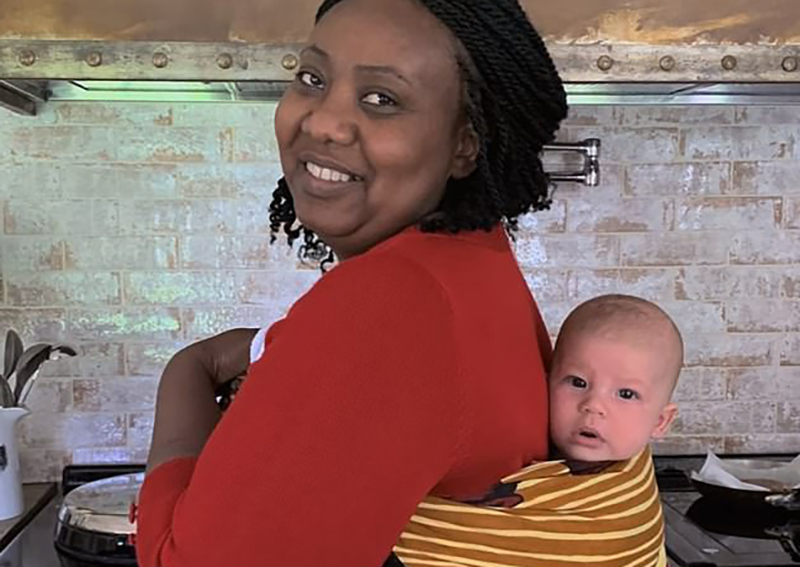By Dr Brighton Chireka
So is sadza bad for you ? We have recently had articles linking sadza to diabetes and many people are now wondering if sadza is bad for them. I have been asked on several occasions by concerned people. They want to know if sadza is bad for them. Does sadza cause diabetes ? Should we stop eating sadza? Before I start to answer these questions let us look at sadza and define it .
What is sadza?
Sadza in Shona is a cooked cornmeal that is the staple food in Zimbabwe and other parts of Southern Africa. Sadza in appearance is a thickened porridge and is commonly made with white maize (Mealie-Meal). This maize meal is referred to as hupfu in Shona. Despite the fact that maize is actually an imported food crop to Zimbabwe, it has become the chief source of carbohydrate and the most popular meal for most of us. Before the introduction of maize, sadza was made from ‘zviyo’ finger millet flour . Sadza is generally eaten with hands without the aid of cutlery. It is rolled into a ball before being dipped into meat, sauce/gravy, sour milk or stewed vegetables to name just a few relishes.
What does Sadza contain?
Sadza contain mainly carbohydrates and it is advised that it should make approximately one third of our diet.
What are carbohydrates?
Carbohydrates are sugars that break down inside the body to create glucose. Glucose is moved around the body in the blood and is the primary source of energy for the brain, muscles, and other essential cells. There are two main types of carbohydrates, simple and complex. The more refined the carbohydrate the more quickly it is converted to glucose and released into the bloodstream. This can cause peaks and troughs in blood sugar levels and results in variable energy levels – refined or simple carbohydrates should make up only about 10% of our daily carbohydrate intake.
Complex carbohydrates, such as those found in starchy foods such as Sadza, potatoes, bread, rice, whole grains, pasta and oats release glucose more slowly into the bloodstream providing more stable and sustainable energy levels to the body.
Sadza also provide fibre which is essential for good digestion and elimination. However, all maize meal is not created equal. The more refined the maize meal (Ngwerewere) , the more simple carbohydrates and less fibre it contains. The coarser the grain such as roller meal (mugaiwa) the better the fibre content and complex carbohydrates. Ideally we should be having our Sadza made from sorghum/millet based meals or the less refined maize meal ( mugaiwa).
So is Sadza bad for us ?
We need to remember that we are what we eat and do after that. There is a lot of misleading information about how bad carbohydrates are and our Sadza is not spared as well. Weight control is about ensuring a balance between calories consumed ( what we eat) and calories burnt ( what we use). Too many calories ( a huge portion of Sadza) equal weight gain, too few calories ( small portion of Sadza) result in weight loss and just the right balance between what we eat and what we use equals weight maintenance.
It’s not only what we eat that matters most ,it’s also what we do after eating. Our lifestyles promotes laziness as we are no longer walking or exercising. We are spending most of our time sitting and we hardly walk as we now drive everywhere. Just try to recall the time you spend sitting watching television or on social media chatting to friends. Another issue is that we are taking a lot of simple sugars unknowingly in our diets. We may have our portion of Sadza but what we are eating in addition to this is very important. A lot of us do not drink water but juices and fizzy drinks. It may be shocking to know the amount of sugar in a can of Coca-Cola.
Coca-Cola contains 10.6g of sugar per 100ml – so that’s 35g in a 330ml can (equivalent of 7 teaspoons) and 26.5g in a 250ml can (equivalent of 5 1/2 teaspoons).
We are recommended to take only 30g ( 6 teaspoons) of added sugar per day . This means that we will have take more than the recommended sugar if we just drink one can of Coke a day(contains 7 teaspoons of sugar). We have not looked at our breakfast, lunch and supper to find out the amount of added sugars we will be getting. The juices that we drink have added sugar and if we drink tea or coffee several cups daily and put sugar in these hot drinks then we are going over the top with our sugar intake. Let’s say for example one drinks 4 cups a day of hot drink and puts one teaspoon of sugar in each cup. This means that per day that person is taking 4 teaspoons of sugar and if that person drinks 2 cans of Coke then their intake of sugar per day becomes frightening.
Zimbo way of eating
So let’s look at ourselves in Harare at lunch time. We drive to Mereki for lunch and because we are still at work we decide to have soft drinks. One can of coke before the Sadza . Sadza is cooked with refined maize meal which is simple carbohydrates which will increase the already high blood sugar from the Coke . We down our Sadza with another can or cans of Coke . We also hardly look at the portion of Sadza that we take but we all know that it is a big portion. We do not walk at all as we have our runners who buy meat and drinks for us whilst we enjoy music in our cars. We then go back to work with our tummies full of food and proceed into the lift to get to our offices. We are back to sitting at our desks and do some work. We have hardly walked yet we have consumed lots of sugar. I deliberately left out alcoholic drinks but you can read about dangers of alcohol in my article below
The Large servings of sadza on the plate, the added caloric intakes from meat with the lack of adequate physical activity result in weight gain. This is especially true for those of us in the diaspora where meat is always available and often reasonably priced. The maize meal we use here is highly refined and has low fibre which is not good for our health. The weight gain sadly puts us at high risk of developing diabetes.
Conclusion
It’s not Sadza that is bad for us, but it is the maize meal that we use , the size of portion and what we do after eating it as well as other sugary drinks that we end up taking. We must enjoy our Sadza but we need to be fully informed on the healthy lifestyle.
We must remember that several risk factors have been associated with type 2 diabetes and include: family history of diabetes, overweight, unhealthy diet , not exercising, increasing age as we get older, high blood pressure, certain ethinicity, history of diabetes in pregnancy called gestational diabetes and poor nutrition in pregnancy, all increases one’s chance of developing type 2 diabetes. Changes in diet ( to western diet ) and physical activity ( no longer walking , now using cars) related to rapid development and urbanisation have led to sharp increases in the number of people developing diabetes. Addressing these factors will reduce our chances of developing this disease. As you can ” see ” It’s not the Sadza as such but a lot of factors as outlined above , so we can enjoy our Sadza and stay healthy.
Here is what you can do to cut down on sugar and stay healthy.
These tips may help you cut down on sugar:
* instead of sugary, fizzy drinks and juice drinks, go for water or unsweetened fruit juice (remember to dilute fruit juices for children to further reduce the sugar)
* if you take sugar in hot drinks or add it to cereal, gradually reduce the amount until you can cut it out altogether
* check nutrition labels to help you pick the foods with less added sugar, or go for the low-sugar version
* choose tins of fruit in juice, rather than syrup
* choose wholegrain breakfast cereals, but not those coated with sugar or honey
* As a rule of thumb, vegetables should cover half your plate, meat a quarter of the plate and sadza the other quarter.
* If you make a relish combines meat with vegetables, make sure that there are more vegetables than meat in your pot.
* Make your sadza using higher fiber, unrefined maize, sorghum or millet meals.
* Enjoy your traditional foods (including sadza) but remember that portions matter and exercising as well.
You may want to check on the following articles.
This article was compiled by Dr Brighton Chireka who is a GP and a Health Commissioner in South Kent Coast in the United Kingdom. You can contact him at: info@docbeecee.co.uk and can read more of his work on his blog at DR CHIREKA’S BLOG
Disclaimer: This article is for information only and should not be used for the diagnosis or treatment of medical conditions. Dr Chireka has used all reasonable care in compiling the information but make no warranty as to its accuracy. Consult a doctor or other health care professional for diagnosis and treatment of medical conditions. Views expressed here are personal and do not in any way , shape or form represent the views of organisations that Dr Chireka work for or is associated with.







1 Comment